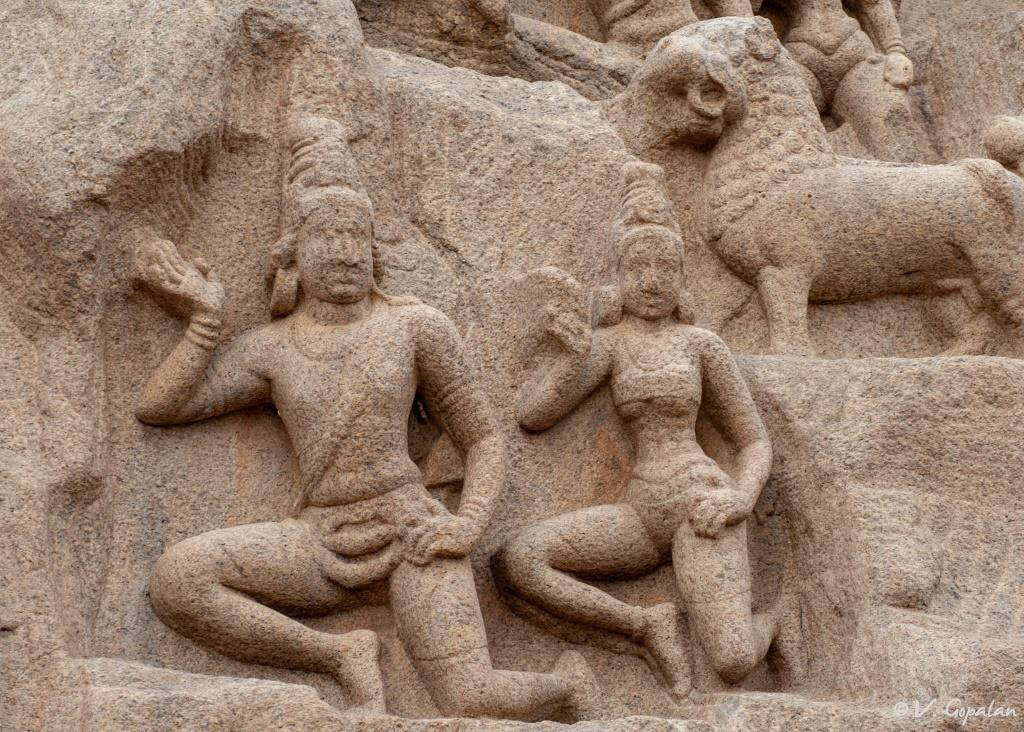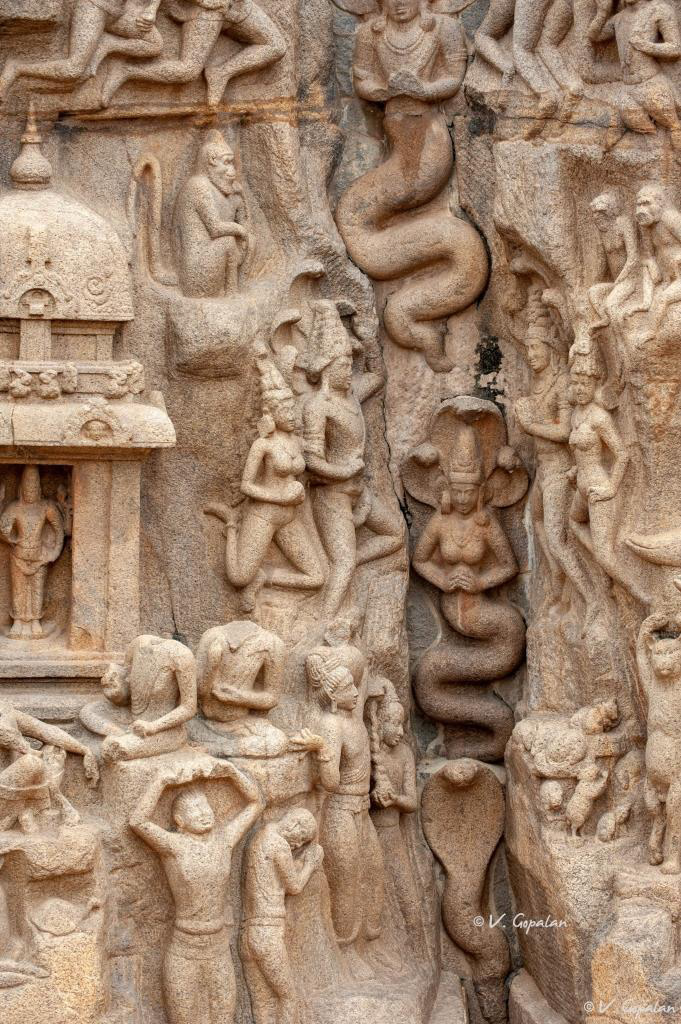Descent of the Ganges
The best example of Rock relief in India is the Descent of the Ganges or Arjuna's Penance at Mahaballipuram, near Chennai, in Tamizh Nadu, India. This was carved in the mid 7th century and is considered the World’s largest preserved open air rock relief - 29 meters long and 13 meters high. It is one of the Group of Monuments at Mahabalipuram that were designated as a UNESCO World Heritage Site since 1984.
This is a protected monument and it is under the care of Archaeological Survey of India. It is a giant open air rock relief carved on two monoliths. The legend depicted in this relief is the story of the descent of the sacred river Ganges to earth from the heavens led by Bhagiratha.
The Arjuna's relief is in the center of Mahaballipuram facing the sea or east. It was created to celebrate the victory of Hinduism over Buddhism by Narasimhavarman I.
The sculptures show deva ganas descending in stages towards the Ganga. Humans are seen worshiping the Ganga, carrying water from it in a big pot or performing rituals on its banks, including Sun worship.



















